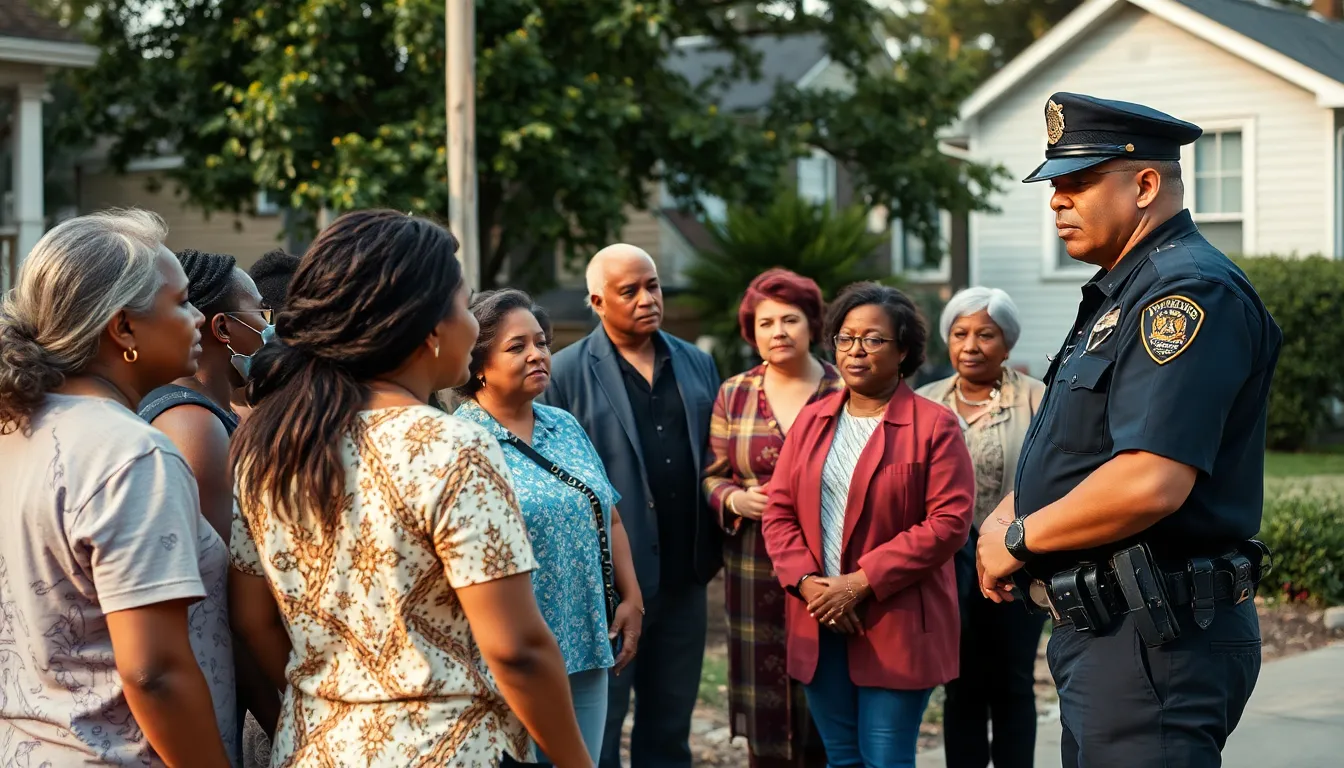In a world where crime dramas keep viewers on the edge of their seats, the harsh reality is that not every murder gets the Hollywood ending. Ever wondered what percentage of murders go unsolved? Spoiler alert: it’s higher than you might think. While detectives on TV wrap up cases in an hour, real-life investigators often face a much tougher road filled with dead ends and unanswered questions.
As the statistics unfold, it becomes clear that the unsolved murder rate raises eyebrows and even a few chuckles—after all, who knew crime could be so… complicated? Join us as we dive into the murky waters of unsolved homicides, exploring the shocking numbers and the factors that contribute to this grim reality. You might just find yourself questioning if the next plot twist in your favorite show is more fiction than fact.
Table of Contents
ToggleOverview of Murder Rates
Murder rates vary significantly across different regions and time periods. In the United States, the overall murder rate in 2021 was approximately 6.9 per 100,000 inhabitants, reflecting a concerning increase compared to prior years. Homicide clearance rates, which indicate how many murder cases law enforcement solves, have fluctuated, affecting public perception of safety and the effectiveness of criminal justice systems.
Numerous factors contribute to the discrepancy in solved versus unsolved murders. One major factor includes the availability of resources, such as personnel and technology, for law enforcement agencies. Regions with more funding often exhibit higher clearance rates due to better investigative techniques and comprehensive training for detectives. Moreover, the nature of the crime plays a pivotal role; cases involving known suspects or strong physical evidence are more likely to be resolved.
Challenging environments also impact murder resolution. Urban areas, which frequently experience higher crime rates, often face strained police resources. Consequently, this strain can lead to lower clearance rates. Additionally, socio-economic variables, such as poverty and education level, correlate with crime trends, influencing rates of murder and resolution.
While the national average for unsolved murders stands at roughly 40%, certain cities report much higher figures. For example, in some metropolitan regions, the percentage of unsolved homicides can exceed 60%. These statistics prompt discussions about the implications of unsolved cases on community trust and the effectiveness of law enforcement.
Understanding murder rates and the challenges investigators face sheds light on an alarming reality, as ongoing efforts aim to improve outcomes in homicide investigations.
Factors Influencing Unsolved Murders

Many factors impact the resolution of murder cases. Understanding these elements offers insight into the challenges law enforcement face.
Law Enforcement Resources
Resource availability plays a vital role in solving homicides. Departments with limited budgets struggle to allocate sufficient personnel for investigations. Staffing shortages often lead to heavy case loads for detectives, making it difficult to prioritize each case effectively. Additionally, some areas lack advanced technology and forensic support, hindering evidence collection and analysis. Urban centers frequently experience resource strain due to higher crime rates, which affects their clearance rates. These limitations delay responses and diminish community trust. Several statistics indicate that cities with lower budgets report unsolved murder rates exceeding the national average of 40%.
Community Engagement
Community involvement significantly influences homicide resolution. Active community participation enhances the flow of information regarding incidents. When residents collaborate with law enforcement, they create an atmosphere of trust. Trust fosters openness, leading to increased willingness to come forward with crucial details. Engagement initiatives, such as neighborhood watch programs, help bridge gaps between citizens and police. Furthermore, communities that prioritize communication often experience lower unsolved homicide rates. For instance, when citizens partner with law enforcement, they contribute valuable tips that can turn cold cases into solved ones.
Statistical Analysis of Unsolved Murders
Unsolved murders present significant challenges across the globe. Nationally and internationally, trends reveal alarming statistics regarding homicide resolutions.
National and International Trends
In the United States, the average percentage of unsolved murders hovers around 40%. This number contrasts sharply with many developed countries, where the rate often falls between 20% and 30%. Differences in investigative resources and criminal justice structures significantly impact these figures. Many urban centers with higher crime rates report unsolved cases exceeding 60%. Law enforcement agencies contend with resource allocations, which directly affects their ability to close cases. Other countries, such as Canada and the UK, demonstrate stronger clearance rates, indicating effective policing and community cooperation.
Variations by Region
Variations in unsolved murder rates also emerge among different regions within the US. Urban areas frequently experience higher rates of unresolved cases compared to rural counterparts. Socio-economic factors contribute significantly to these disparities; disadvantaged communities face higher violence yet struggle with police engagement. Regions with robust community ties often report better outcomes in case resolutions. Statistics show that cities with effective neighborhood watch programs and active citizen participation achieve lower unsolved rates. As a result, differences in local initiatives provide insight into effective strategies for tackling unsolved homicides.
Implications of High Unsolved Rates
High rates of unsolved murders significantly affect community trust in law enforcement. When individuals see persistent unsolved cases, they often question the effectiveness of police departments. Increased feelings of insecurity arise in communities where a larger percentage of homicides remain unresolved.
Police resource limitations lead to more unsolved cases. Many departments struggle to allocate necessary personnel and advanced technology for thorough investigations. Consequently, heavy case loads and delayed responses become the norm, further complicating the resolution of murders.
Socio-economic factors also play a crucial role in unsolved murder rates. Disadvantaged communities frequently experience higher violence yet lack adequate engagement from law enforcement. In contrast, regions with strong community ties and active citizen participation generally see lower unsolved homicide rates.
Public participation greatly impacts the resolution of murder cases. Initiatives like neighborhood watch programs encourage cooperation between citizens and police. Collaborative efforts foster trust and promote information sharing, which can prove vital in solving cases.
Statistical variation highlights these disparities across urban and rural areas. In urban centers, unsolved murder rates often exceed 60%. Conversely, rural regions typically maintain lower unsolved rates due to fewer homicides and closer-knit communities.
Overall, the implications of high unsolved murder rates extend beyond individual cases. They shape perceptions surrounding safety, law enforcement effectiveness, and community cohesion. Addressing the factors contributing to these rates can lead to improved outcomes and enhanced public trust in the criminal justice system.
The issue of unsolved murders remains a pressing concern in many communities. With around 40% of homicides going unresolved in the U.S., the gap between crime fiction and reality is stark. Resource limitations and socio-economic factors significantly hinder law enforcement’s ability to solve these cases.
Community engagement plays a crucial role in addressing this problem. When citizens actively participate in crime prevention initiatives, they can help foster trust and cooperation with law enforcement. This collaboration is essential for improving case resolution rates and enhancing public safety.
Ultimately, tackling the challenges of unsolved murders requires a multifaceted approach. By addressing the root causes and encouraging community involvement, it’s possible to make strides toward reducing the number of unresolved homicides.



